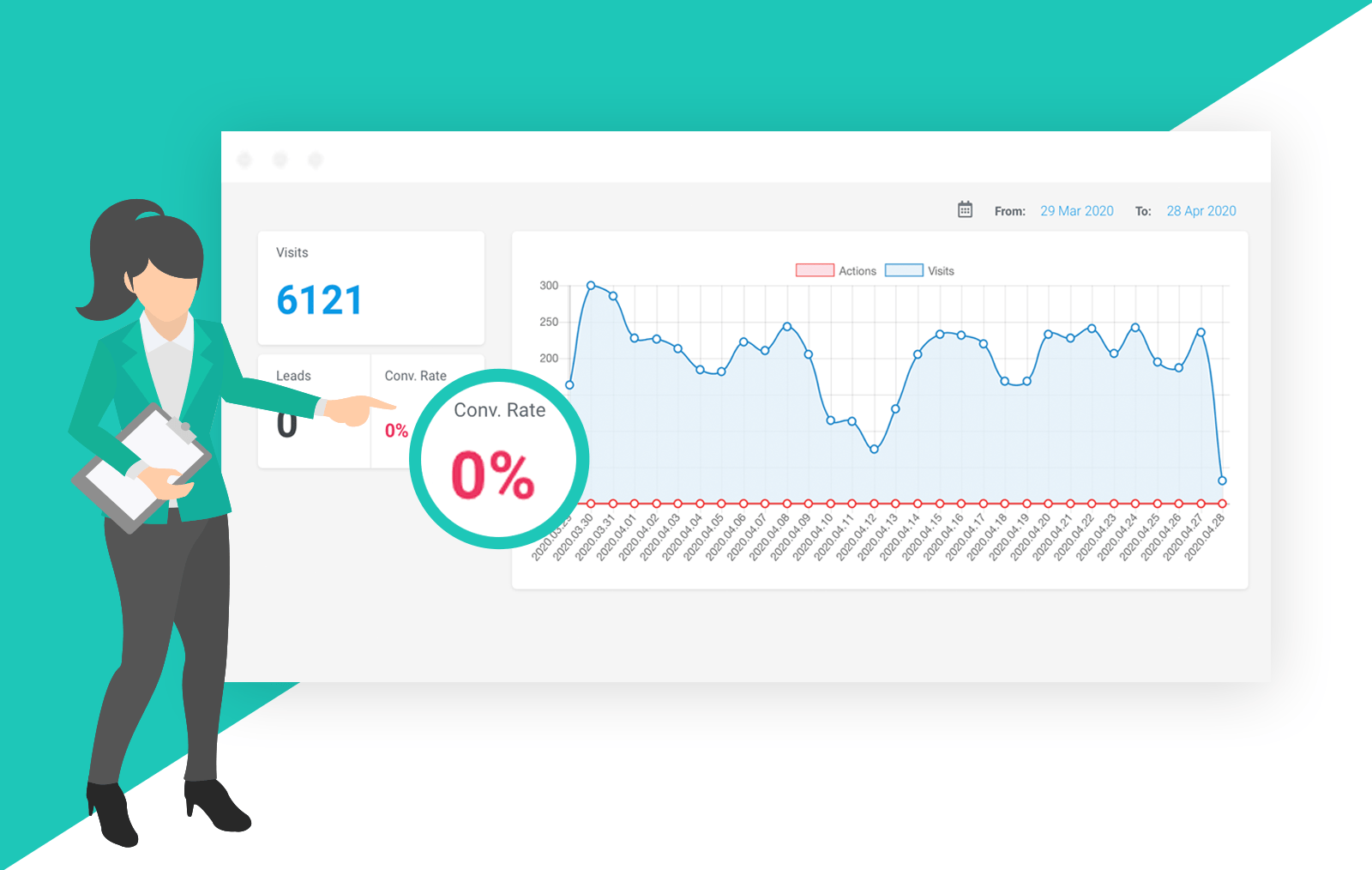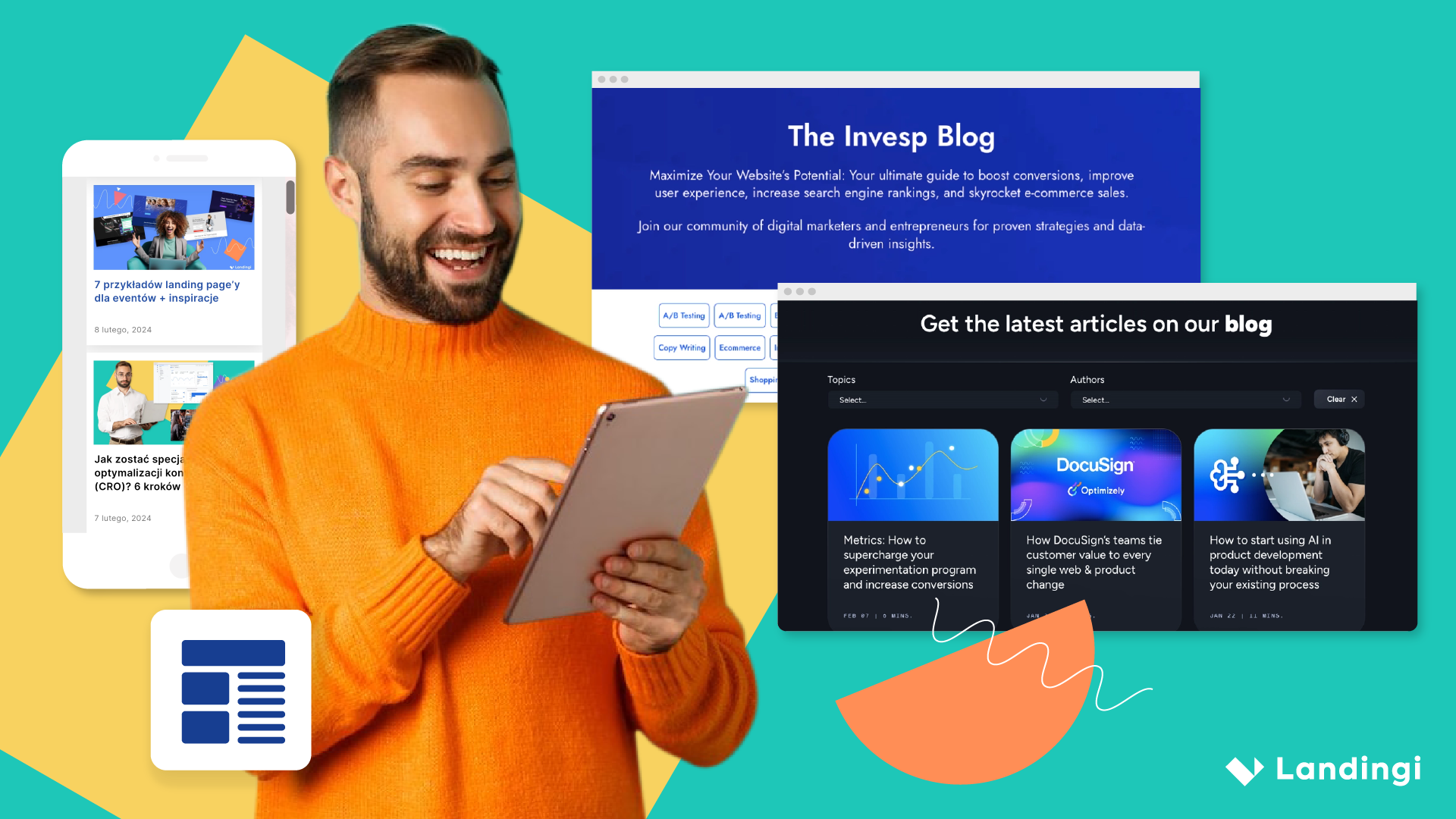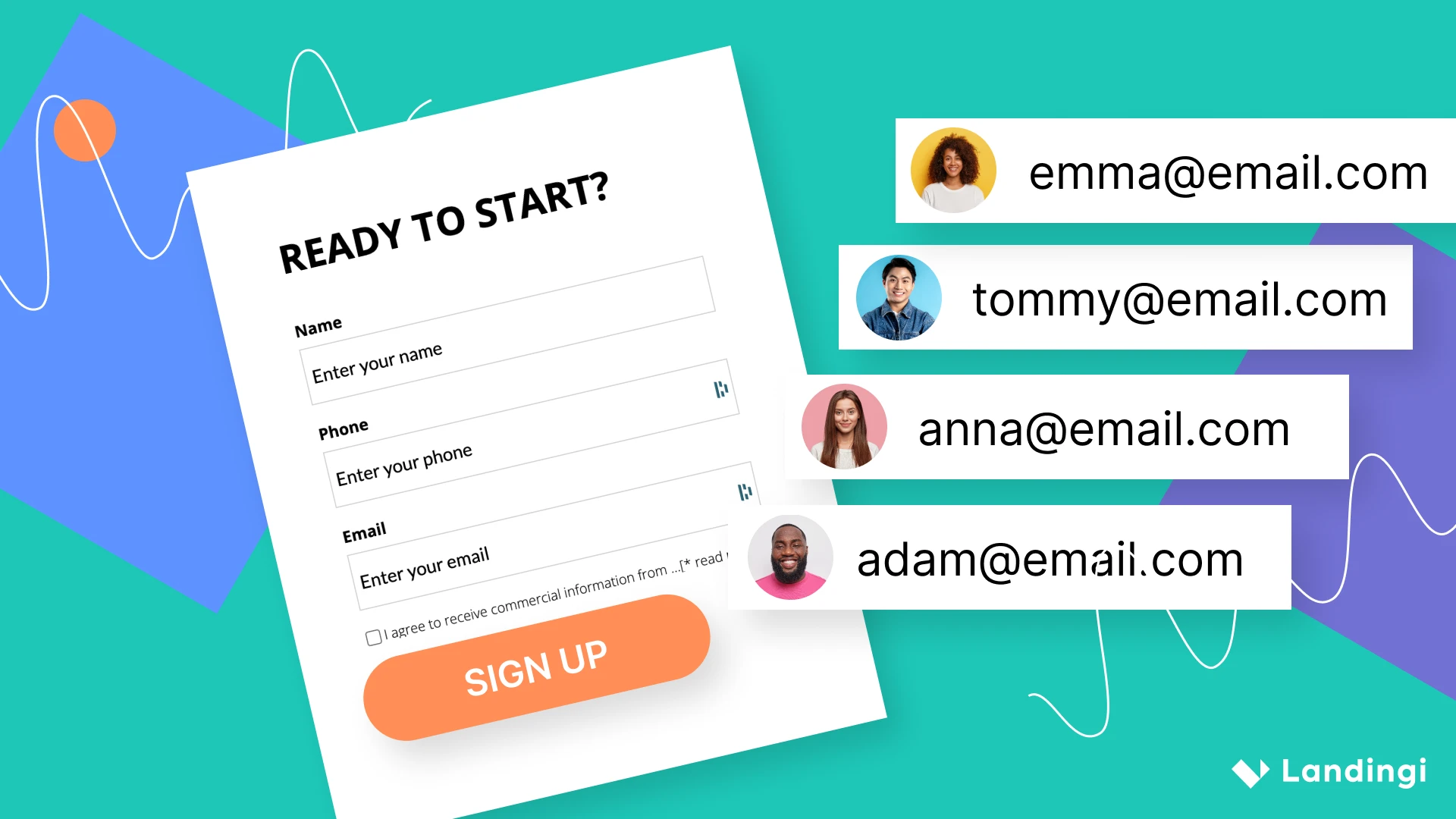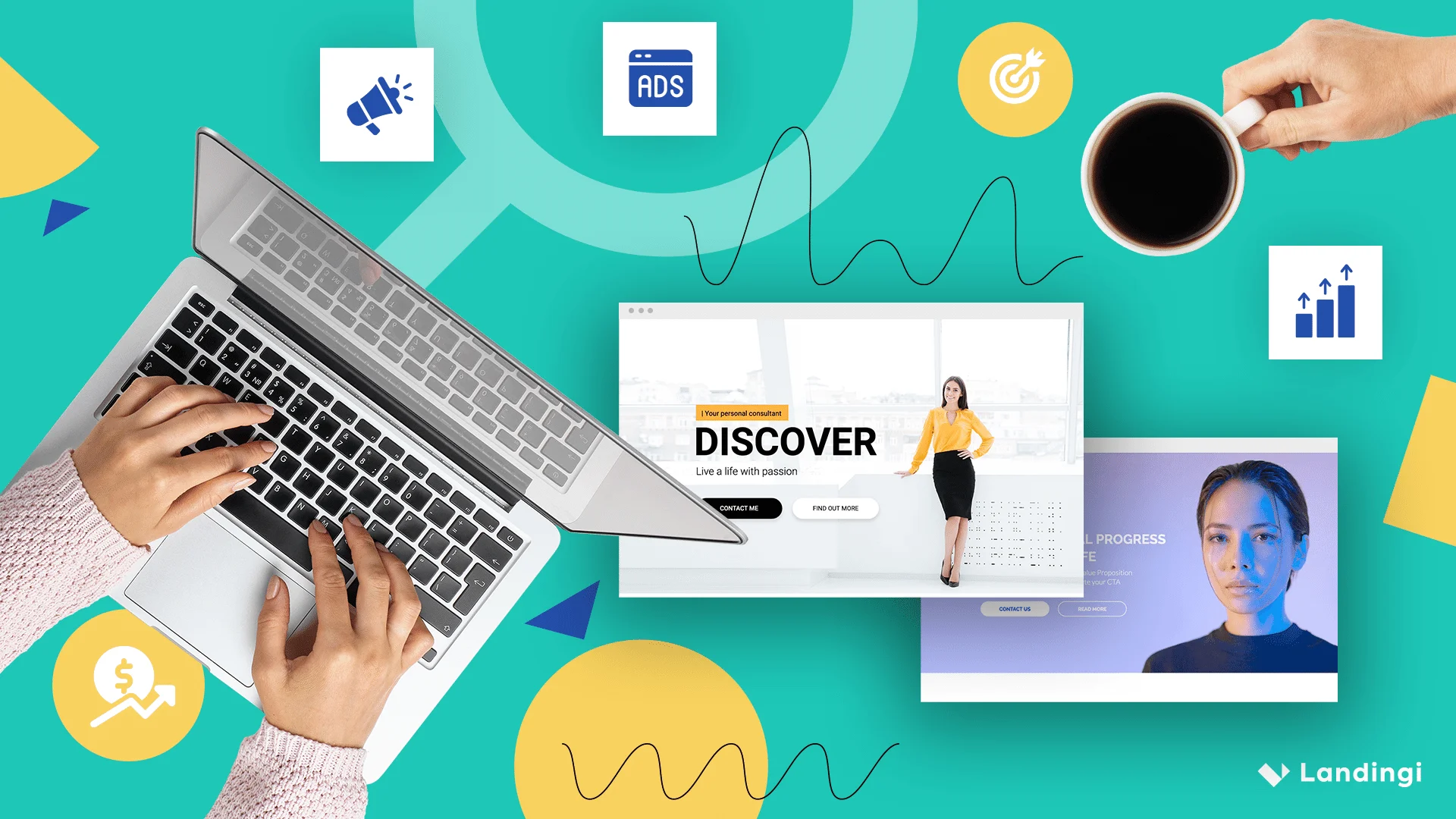You have built a landing page, launched your campaign, and, eventually, burnt through your budget? No worries – it happens.
If you have already asked yourself dozens of times: “why is my landing page not converting”, now it’s time to take a step back and check if everything went right. And, most importantly, what went wrong.
According to the Marketing Experiments study – only “22% of businesses are satisfied with their conversion rates”.
It means that up to 78% of businesses may struggle with boosting conversion rates, so the problem is quite popular.
The most common reasons behind not converting landing pages are:
- mismatched offer,
- lack of consistency,
- lack of value for the target audience,
- poor landing page design,
- poor user experience (UX),
- having more than one offer per landing page.
Reason #1: Mismatched offer
The issue of your landing page not converting may not be the landing page itself, but your offer. You can design a state-of-the-art landing page with the most convincing copy ever written. Nevertheless, if no visitors are interested in your offer, they won’t convert anyway.
Before putting an offer on your landing page, you should try to get into your visitor’s shoes. Try to imagine yourself coming across your landing page for the first time with no knowledge about your business or what it does.
Ask yourself:
- what offer would be the most appealing and could make you sign up,
- what benefits come with your offer,
- if there are any additional triggers to click on your Call To Action (CTA).
Once you answer all these questions, you will be able to create a compelling and attractive offer for your target audience.
Reason #2: Lack of consistency
Another key feature of every decent landing page is consistency. Language, design, or tone of your landing page should match your ad. Otherwise, you will put your audience in a different context on each level of your marketing or sales funnel, and that might create an incohesive feeling to it.
Once you choose the theme, colors, images, pitch and CTA for your ad, email, or other referring sources, you should stick to it on your landing page (the place where a click drives traffic). That way, there is a cohesive feeling to your campaign. If you change your message or the visuals, visitors may feel weirded out which will impede conversions.
Your landing page should play a vital role in the whole customer journey through marketing or sales funnel, making visitors interested in your offer and willing to explore your business further. In the sales funnel there are 4 primary phases:
- awareness,
- interest,
- decision (evaluation and commitment),
- action.
Ads are created to raise awareness. The interest phase is where landing pages come into play. In order to smoothly direct a visitor through the whole funnel, you need to take care of the consistency of your messages rather than raising confusion around your offer. It simply doesn’t work nor does it inspire trust among users.
Reason #3: Lack of value for the target audience
As Peep Laja, founder of ConversionXL, puts it – “The success of your landing page is 98% about the offer. Make it as good as possible. Make it about the user. Forgot 10% off. Real value. Work on your offer more than anything. Then just put it on an undistracted landing page, and odds are it will work great”.
If you communicate the features of your products or services rather than the value they could bring to your customer’s life, your landing page won’t be converting, as visitors will see no point in signing up or acquiring your offer.
It happens especially when you are too fixated on pushing your company or brand instead of focusing on the specific advantages your offer provides customers with. The landing page content should be primarily about proving value rather than touting your enterprise.
‘The success of your landing page is 98% about the offer. Make it as good as possible. Make it about the user. Forgot 10% off. Real value. Work on your offer more than anything. Then just put it on an undistracted landing page, and odds are it will work great.’
Peep Laja
Before you manage to make a sale, you need to build up credibility and emphasize your expertise. Moreover, your landing page should clearly state a customer value proposition.
Reflect on what may trouble your model customers and try to convince them that your offer will provide a solution. In order to prove that you create valuable content, you can go beyond a traditional “sign up now” landing page.
A great idea is to include an incentive for visitors that will also show the value of your work, such as:
- gated content or lead magnet (a free ebook, valuable article),
- webinar on a relevant subject,
- free quote or consultation.
Once visitors believe that your offer has value for them, they will be willing to convert. Otherwise, they will simply exit without even leaving an imprint of having been here before.
Reason #4: Poor landing page design
According to Interactive Marketing Inc. “you only have 8 seconds to make an impression on a landing page”.
The first impression matters and it is heavily impacted by landing page design. If it seems off-putting from the first moment, visitors won’t stay to explore it more.
If you don’t equip your landing page with all the essential elements and features, you won’t make people convert.
A professionally-designed landing page (which you can create with our landing page builder) should consist of the core landing page elements such as:
- a catchy and concise headline,
- a subheading – corresponding to the headline, concise, but a little bit more descriptive,
- persuasive phrases outlining the benefits and value that come with your offer,
- images (but not too many),
- visible CTA imposing an action,
- short and neat-looking lead generation form.
The above elements altogether make up a landing page structure. When designing a landing page, remember about displaying all of them in a neat and ordered way.
Reason #5: Poor user experience
The high-quality landing page design also profoundly impacts UX. Aside from a neat and beautiful look, you need to take care of stellar UX. If the technical aspects of your landing page aren’t up to standard, it won’t be converting. It may load too long, or the UX needs to be improved.
The landing page should be simple, honest, concise, and scan-friendly. All the content should be put in a way that makes it easy to navigate – according to Crazyegg, “37% of respondents said a poor experience with site navigation was enough of an annoyance to make them want to leave the site completely”.
Other effective elements which will add quality to your landing page design and also will have a positive impact on UX are:
- testimonials – “88% of consumers seem to place a lot of trust in reviews and testimonials” so they can truly do a lot of good for your business (according to True List),
- videos – “using videos on landing pages can increase conversions by 86%”,
- a pop up – “some pop ups can convert up to 40% of your website visitors into subscribers and leads”,
- bullet lists – using them will simplify your quoting benefits in a clear way.
When it comes to UX, you also need to make sure that your landing page loads fast. Neil Patel said it best – “a 1-second delay in your site speed can result in a 7% reduction in conversions”. Page speed is a crucial factor, as nobody likes to wait and look at loading wheels which can truly make people go bonkers.
Reason #6: Having more than one offer per landing page
If you try to kill two (or more) birds with one stone and aim to achieve many goals on a single landing page, I’ve got news for you. You probably won’t.
You need to remember that 1 landing page = 1 goal. Otherwise, you won’t keep your visitors focused and they won’t convert.
Only if all the elements of your landing page contribute to one goal, you have high chances of making your landing page performance stellar. Putting more than one offer will distract and overwhelm visitors and that won’t do your business any good.
As you can see, there may be a few reasons behind your landing page not converting. Nevertheless, you shouldn’t make a complete makeover right away, as you won’t discover what was not working exactly.
Instead, you should kick off with A/B testing different aspects of your landing page. But remember – one element at a time. And the more data and conclusions you gather while testing, the more learnings you will be able to apply in order to optimize your landing page in the future.







